Mom and dad visited Emma, Chris and the new little grand baby in Japan this last October. Emma lives in Okazaki not that far from the famous shibori town – Arimatsu – so two rainy but fantastic days were spent soaking in all of the shibori and indigo blue inspiration that is Arimatsu. Emma was trilled with the timing of mom and dad’s trip because the Annual Fall Shibori Festival in Arimatsu fell right smack in the middle of their time in Japan. The town holds two annual festivals (the other being during the summer) and these are the only times during the year that one of the very old, very beautiful, storehouses is opened up to the public. Plus, the town tends to be pretty sleepy on just any old day but there is an extra level of buzz and bustle during the festivals.
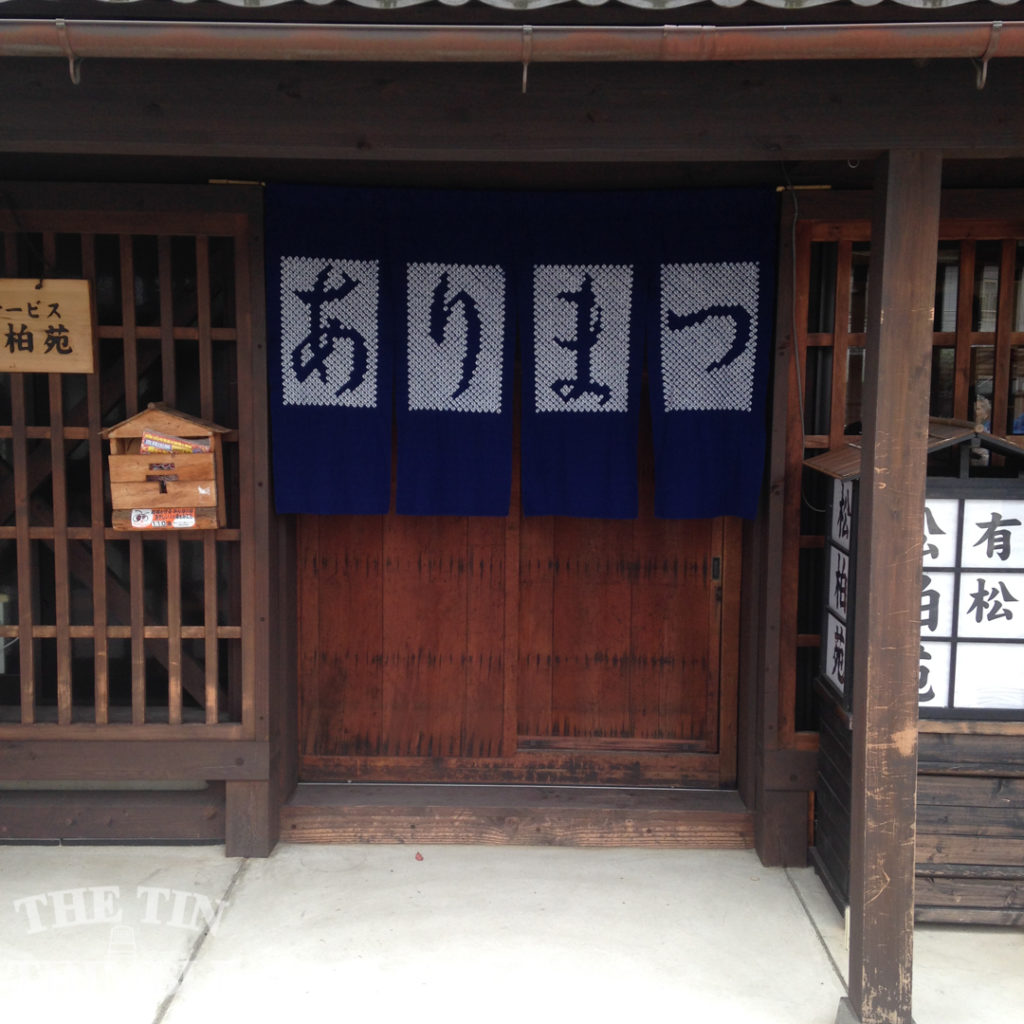
These banners (noren) hang above many of the entryways of the businesses and homes in Arimatsu. The white part was shibori tied and the rest dyed to create the Japanese characters for A-Ri-Ma-Tsu.
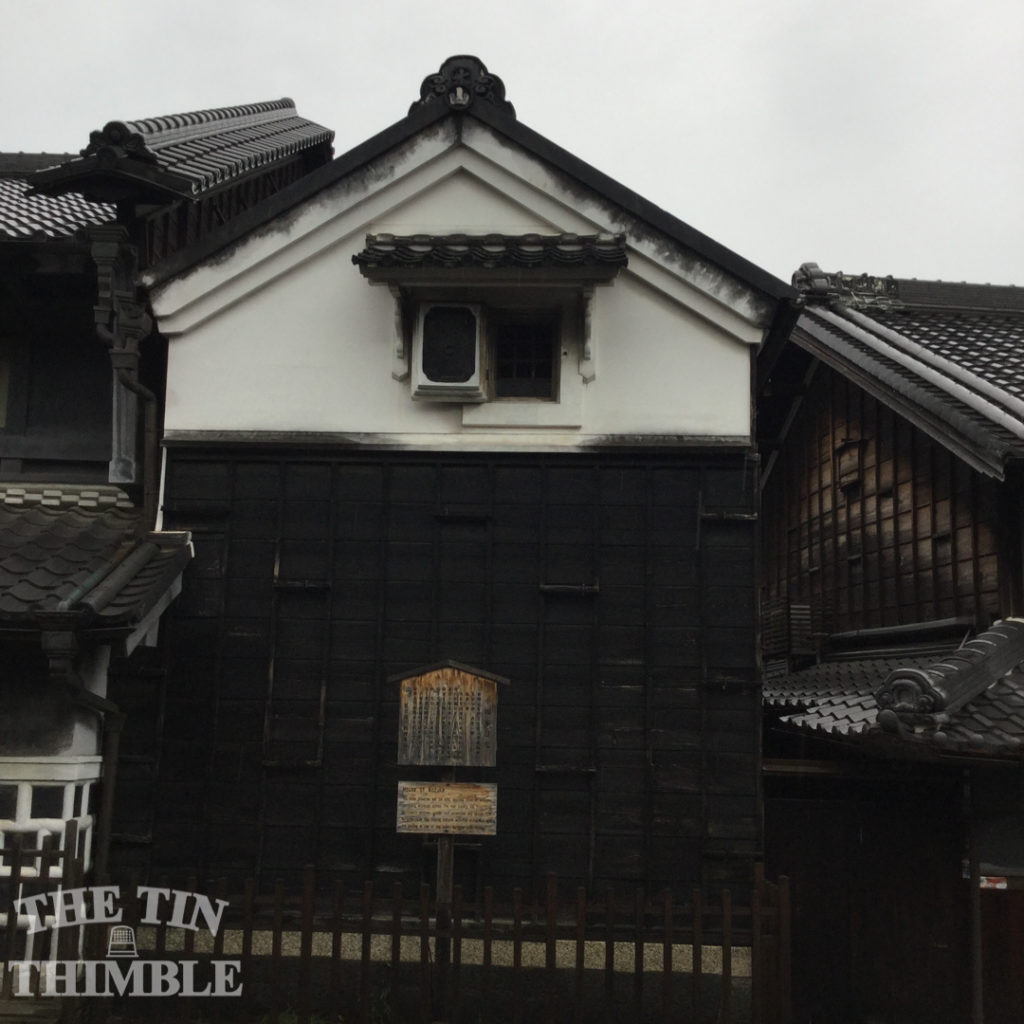
The Edo period (1603-1868) architecture of the town is amazing and incredibly inspiring. Look at all of the surface textures, and angles, and subtle color variations!
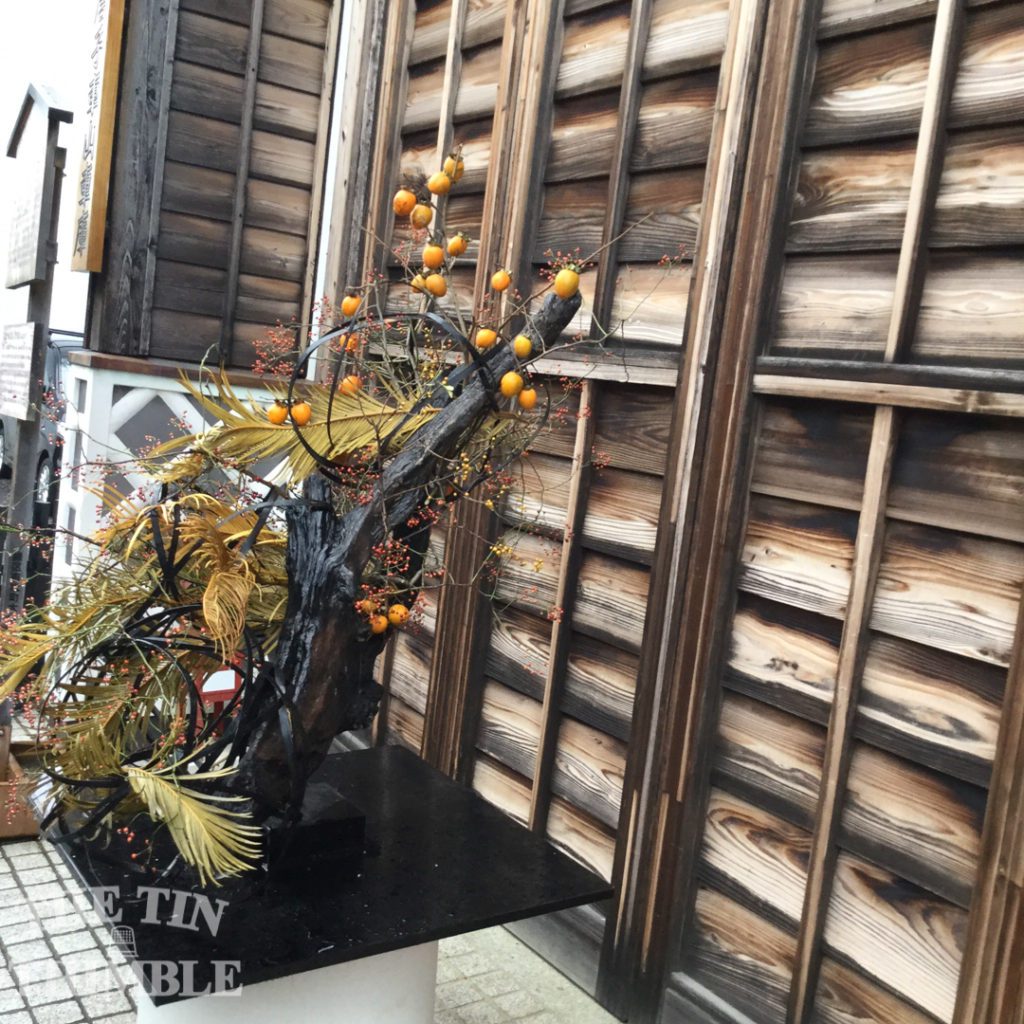
There is always an ikebana (flower arrangement) display during the Fall Shibori Festival. Every piece was incredibly detailed and I’m pretty sure mom wanted to take a picture of every single arrangement.
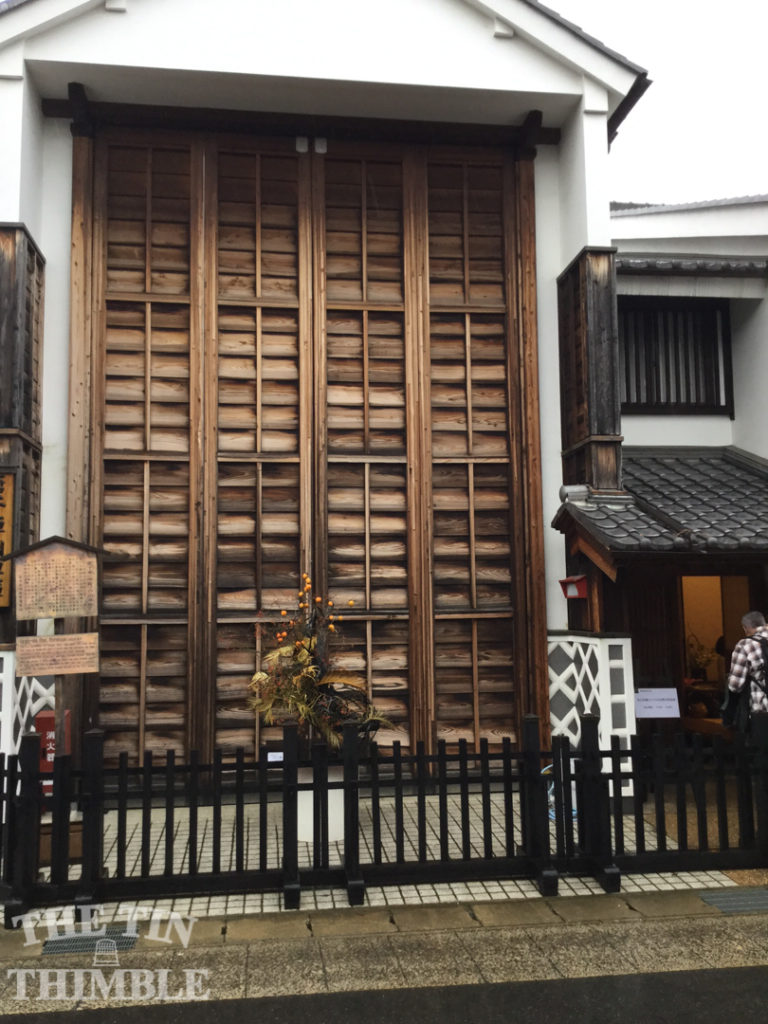
This is a storehouse where one of the town’s very old parade floats is kept. They carry these floats throughout the town during the Summer Shibori Festival. The storehouse wasn’t open to explore this particular day but LOOK at those doors!!
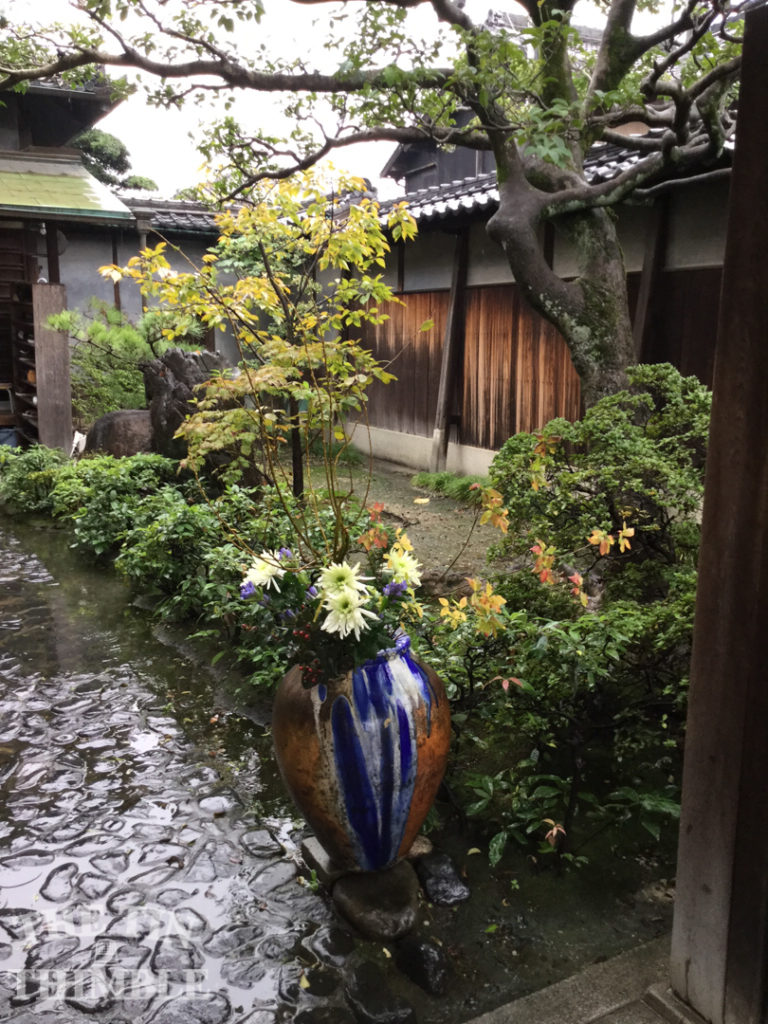
A beautiful pot, holding a beautiful arrangement of flowers just outside the ancient storehouse.
If you’ve been following us on Instagram (@thetinthimble) then you’ve been seeing a lot of blue in our feed. Sharon has revived our indigo vat and has been up to her elbows, literally, in all things indigo and shibori. We have a new rack of indigo dyed clothing at the shop, some with lovely shibori designs incorporated, and she’s also hoping to have some yardage for sale soon!
For those of you wondering, yes, she’s working on finalizing details for an indigo + shibori workshop. Comment below if you’re interested and make sure you’re receiving our email newsletter!
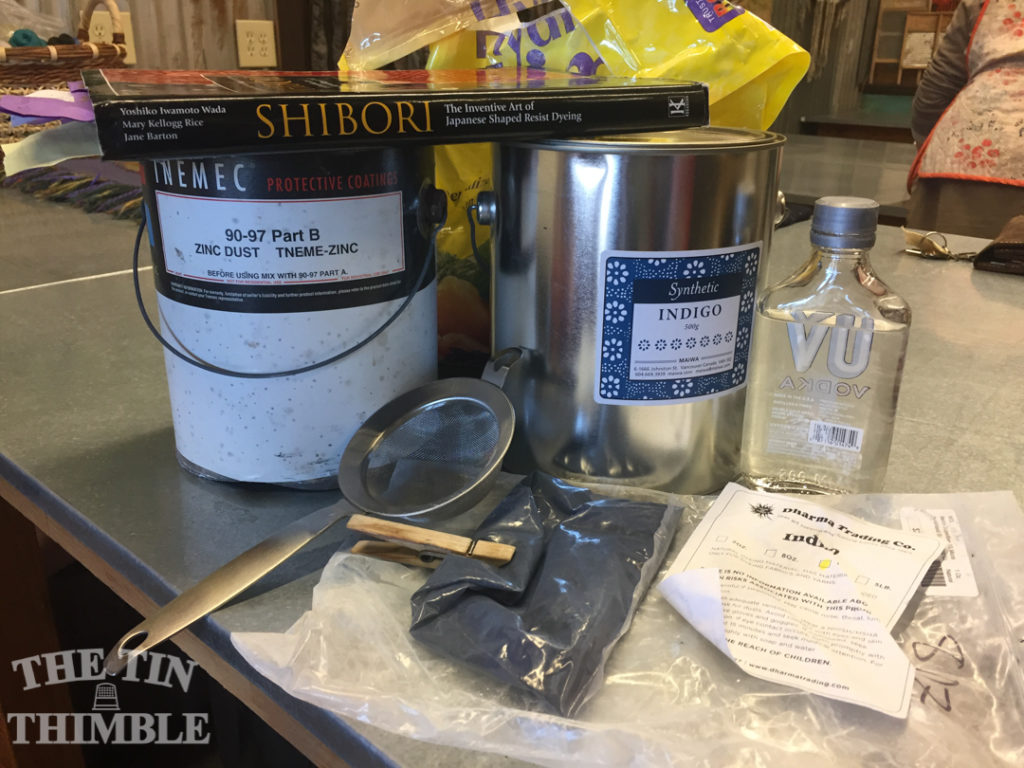
While we would love to have an all natural, organic indigo vat that is not the kind of vat we were originally taught with. The synthetic, zinc-lime vat is what we know and what we’re sticking with, for the moment at least. There is also the factor of smell that we have to take into consideration. While an all natural, organic vat sounds fantastic it has a considerable, not exactly pleasant, aroma and we share our space with a whole lot of other businesses and their customers who’s noses we have to take into consideration!
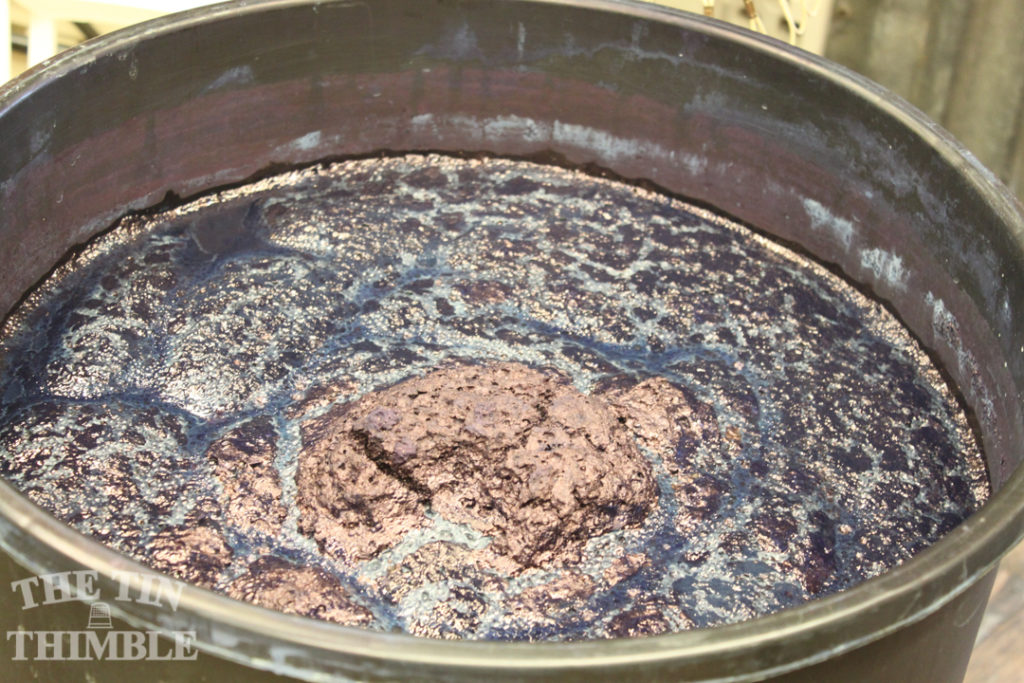
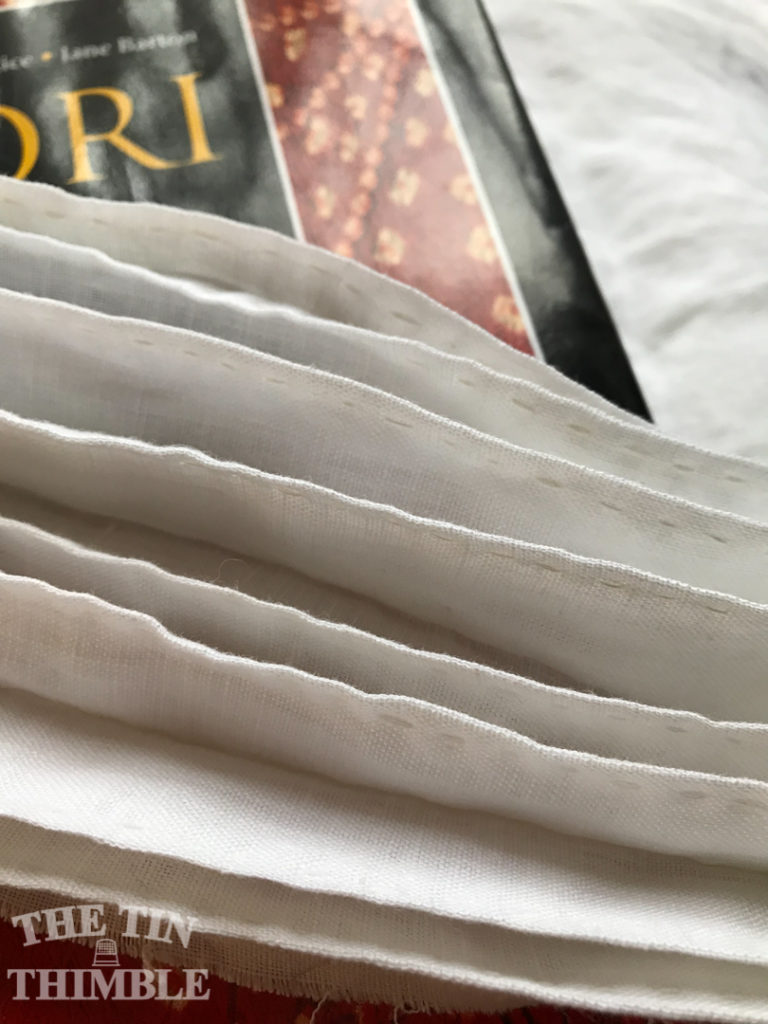
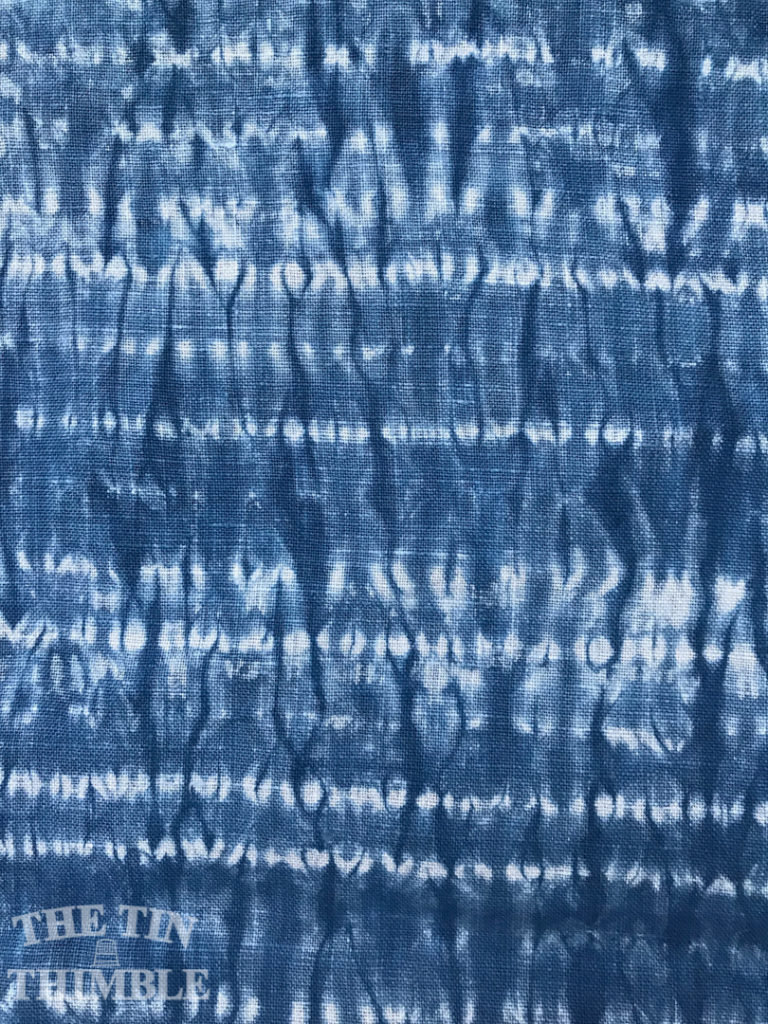
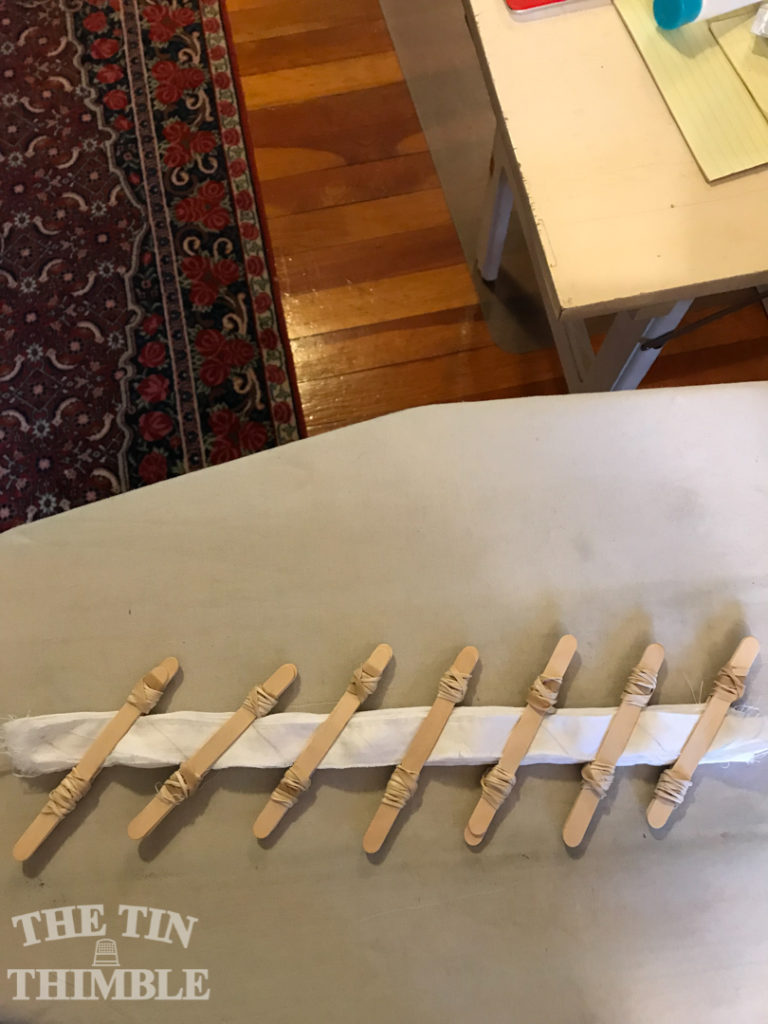
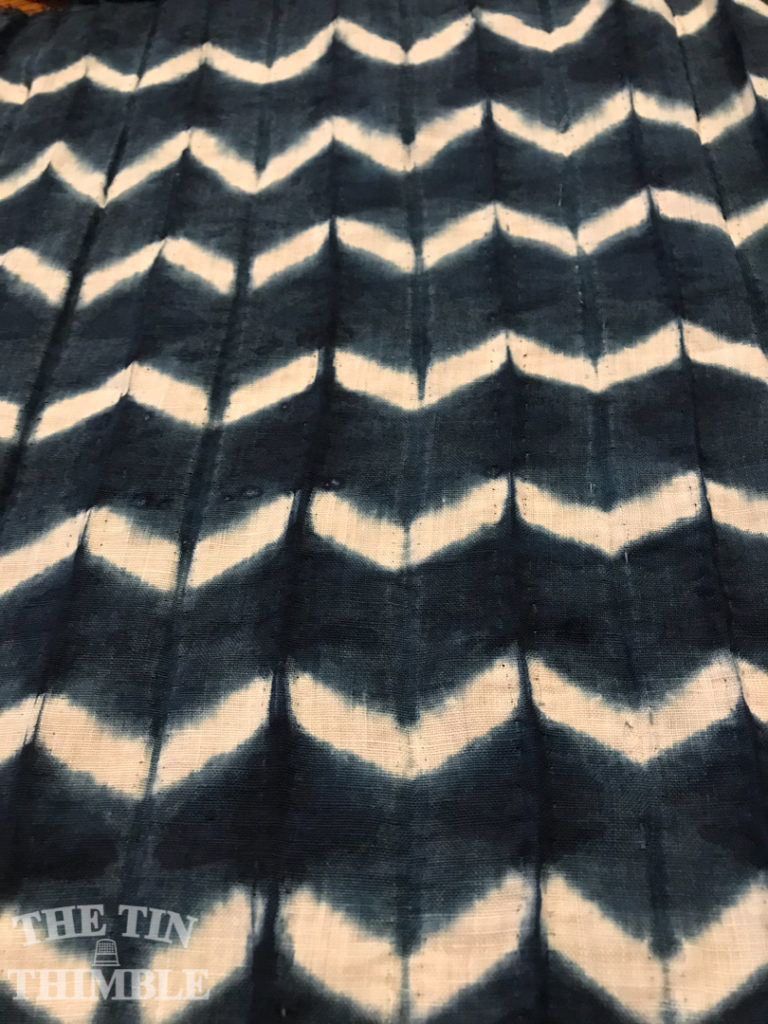
Pleating the fabric and then binding it with craft sticks and rubber bands created a resist the produced this chevron stripe pattern.
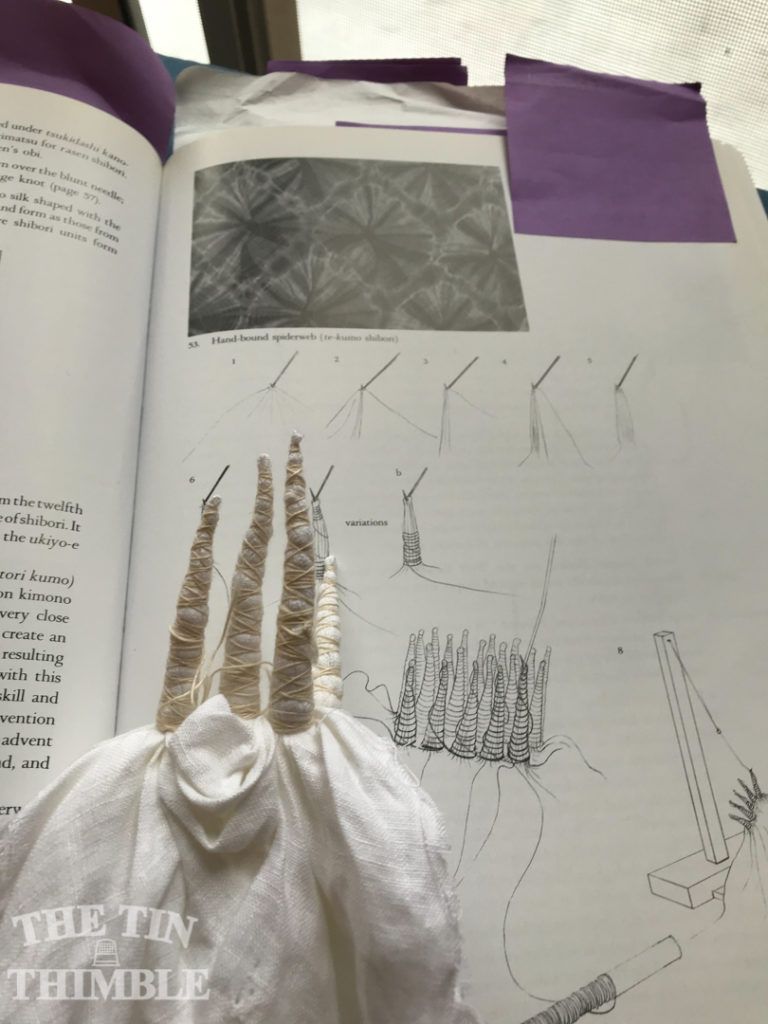
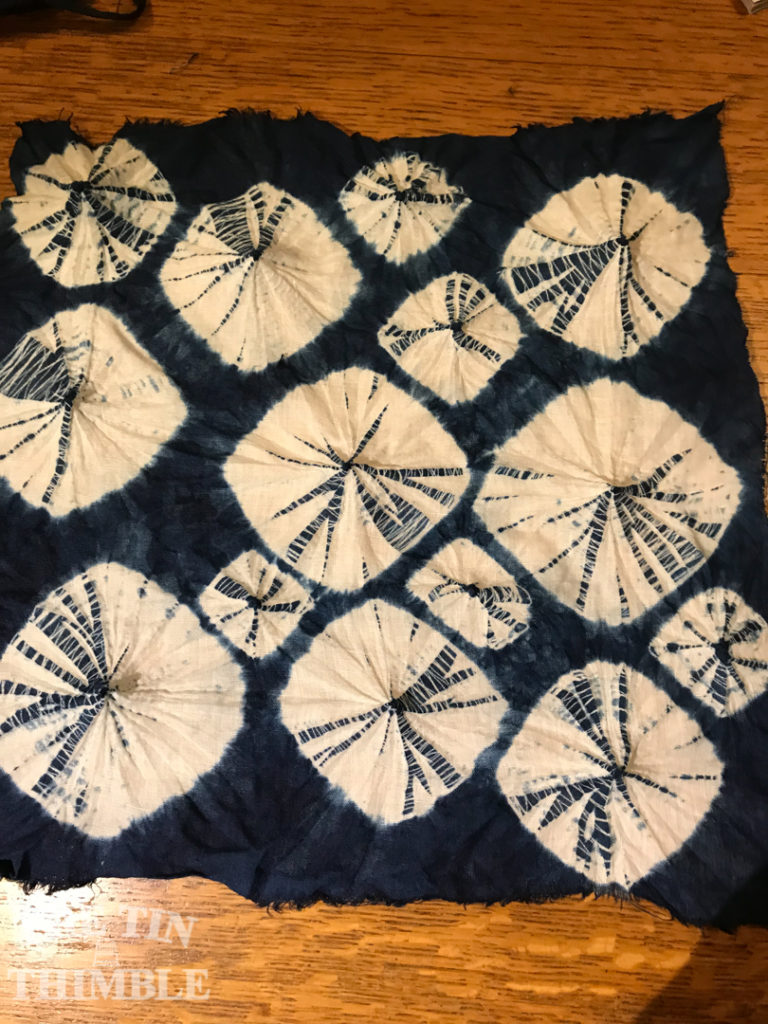
These designs are called kumos! Kumo means a few different things in Japanese but here I’m pretty sure they use it because it can mean spider. They look a bit like spider webs – don’t you think?
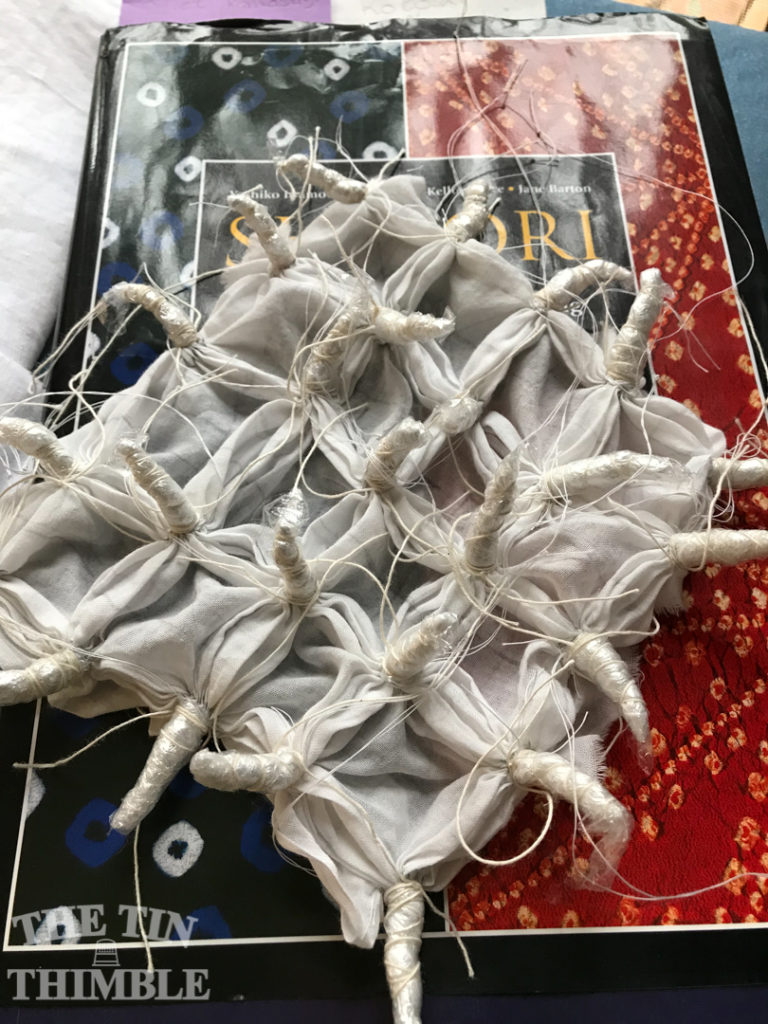

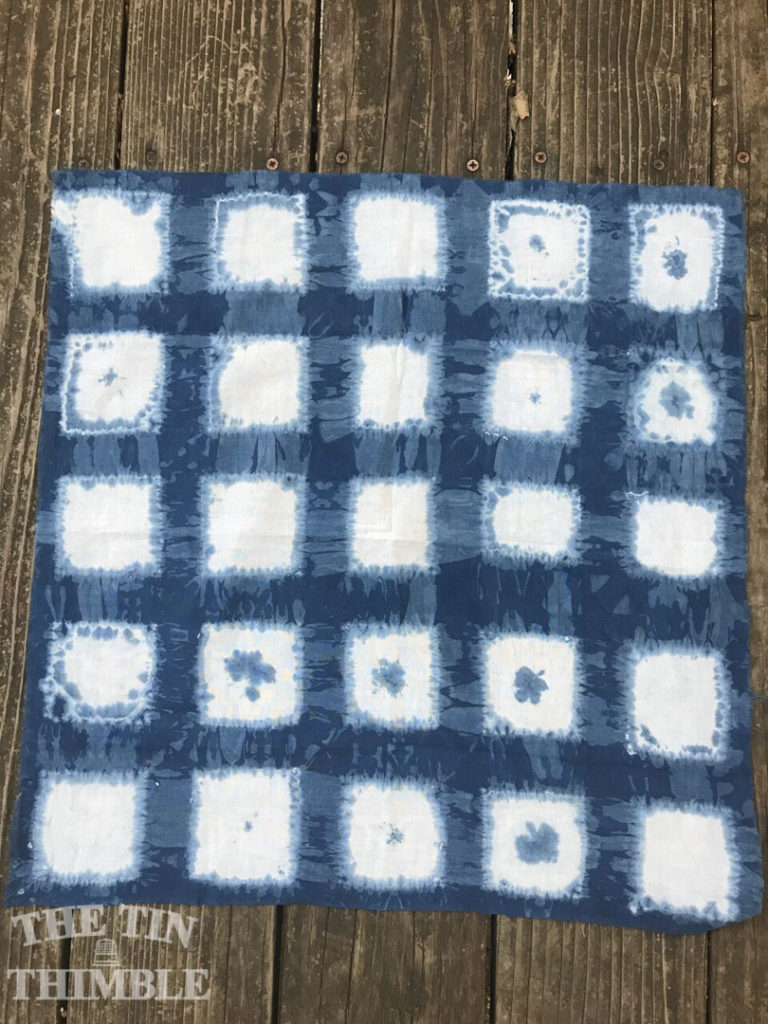
This is a koboshi square piece. Made by tying and capping twenty five little squares (see two photos above). Mom tells us, “What I learned – make sure you have securely closed the very top. Definitely a beginners piece but good practice”.
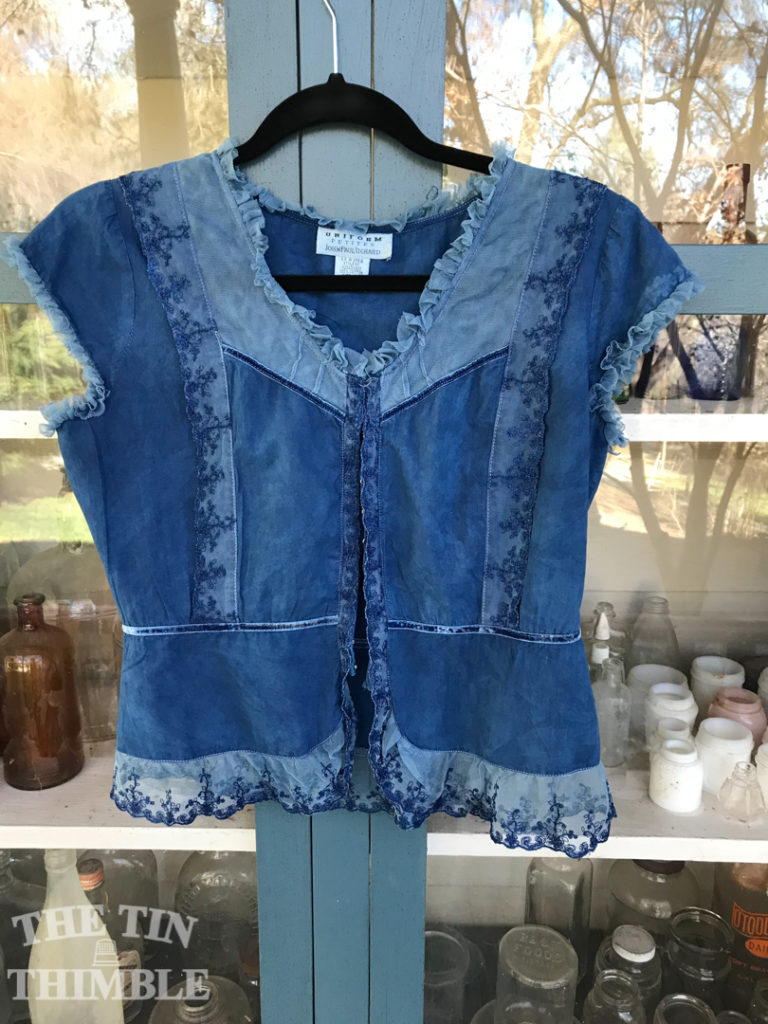
We love all the different shades of blue created when the different types of fabric, the embroidered lace and the velvet ribbon in this top absorbed the indigo dye differently.
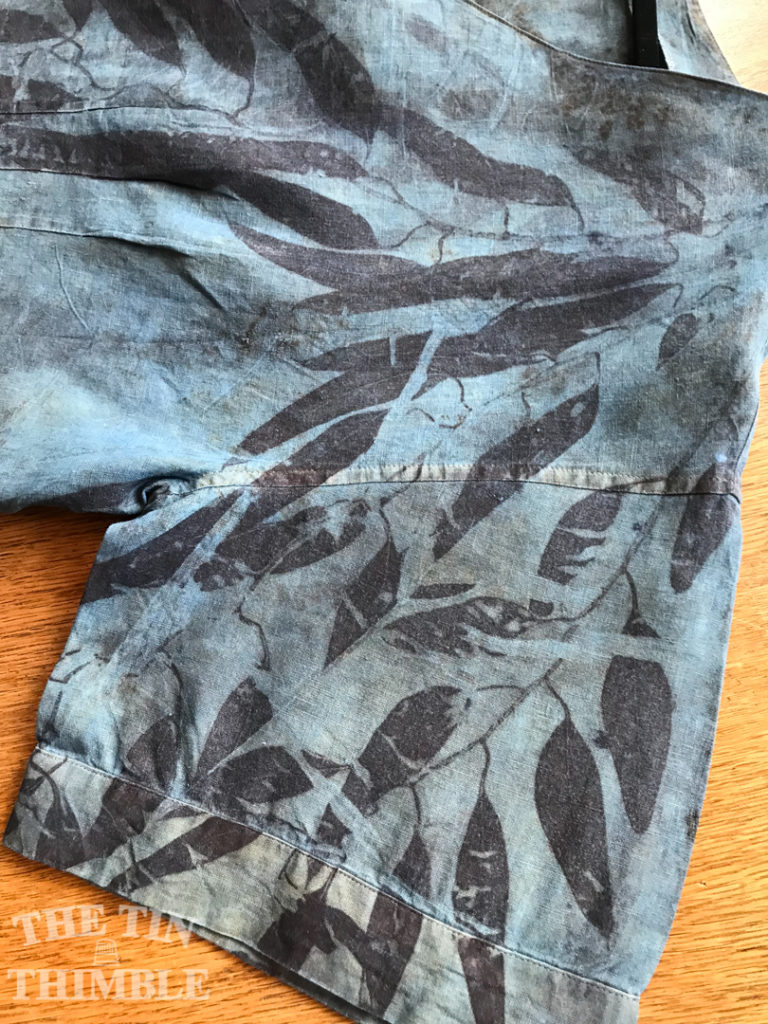
Botanical dyed clothing + an indigo dip.
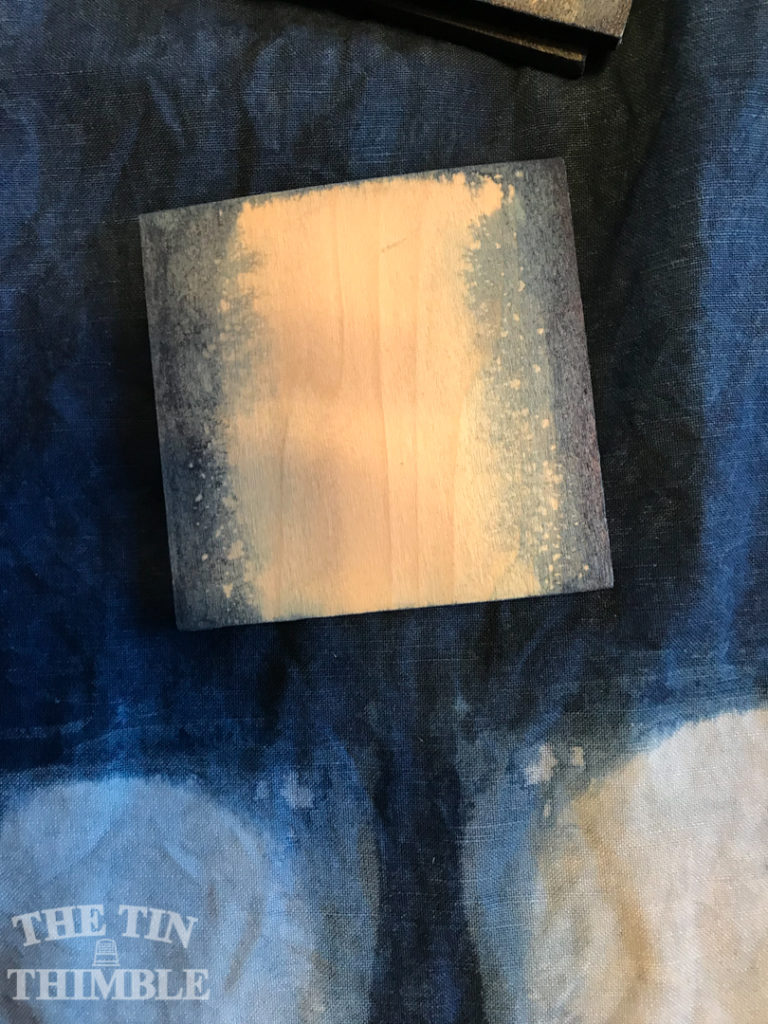
Mom texted me this photo with just a snippet of text. “Warped board effect.” I had to smile. She had been telling me just a few days earlier that the wood she was using as clamped resists for her indigo dyeing experiments was not the right kind of wood. I kinda brushed her off by telling her I was pretty sure we had just cut 1X4’s when we did this technique in Mellisa Arnold’s classes. Well, now she had her proof that she was right. 🙂
Once she has the “right” wood though she will have better control over her process. Is that a good thing? Probably, yes. But, sometimes it’s in the experimental phase (with the not quite right tools) that we discover new things. She may tuck those warped pieces of wood away and bring them back out when she wants more unpredictable results. Because, you know, textile arts isn’t always about having complete control over the process or the results. Sometimes you want to see where the materials are going to take you rather than the other way around. At least, those are my thoughts.
What do you think of mom’s indigo and shibori experiments? Do you have experience with indigo, and if you don’t have any, would you like to learn? Let us know below!
SaveSave

Yes, yes, yes! Sign me up!
🙂 Love to hear you’re ready to sign up Phyllis! We’ll make sure to keep everybody updated once we have a class scheduled!
Hey Phyllis! We’re happy to say we have two indigo + shibori workshops officially scheduled. You can find them here or give us a call at 916-652-2134 to register or ask any questions. Thank you!
Looks super fun, what a great trip. I would love to join in and play, keep me posted. I am due for a Tin Thimble visit.
It was a great trip!! We’ll make sure to keep you posted, Kim – it’ll be nice to have you in the shop again! 🙂
Hi Kim! I wanted to let you know that we have two indigo + shibori workshops officially scheduled. You can find them here or give us a call at 916-652-2134 to register or ask any questions. Thank you!
Sign me up too!! I’ve been wanting to try this for a while. Maybe I can even find 2 classes back-to-back to take and make it a truly immersive experience!
Hello Ruth! Just wanted to let you know that we have two indigo + shibori workshops officially scheduled. You can find them here or give us a call at 916-652-2134 to register or ask any questions. Thank you!